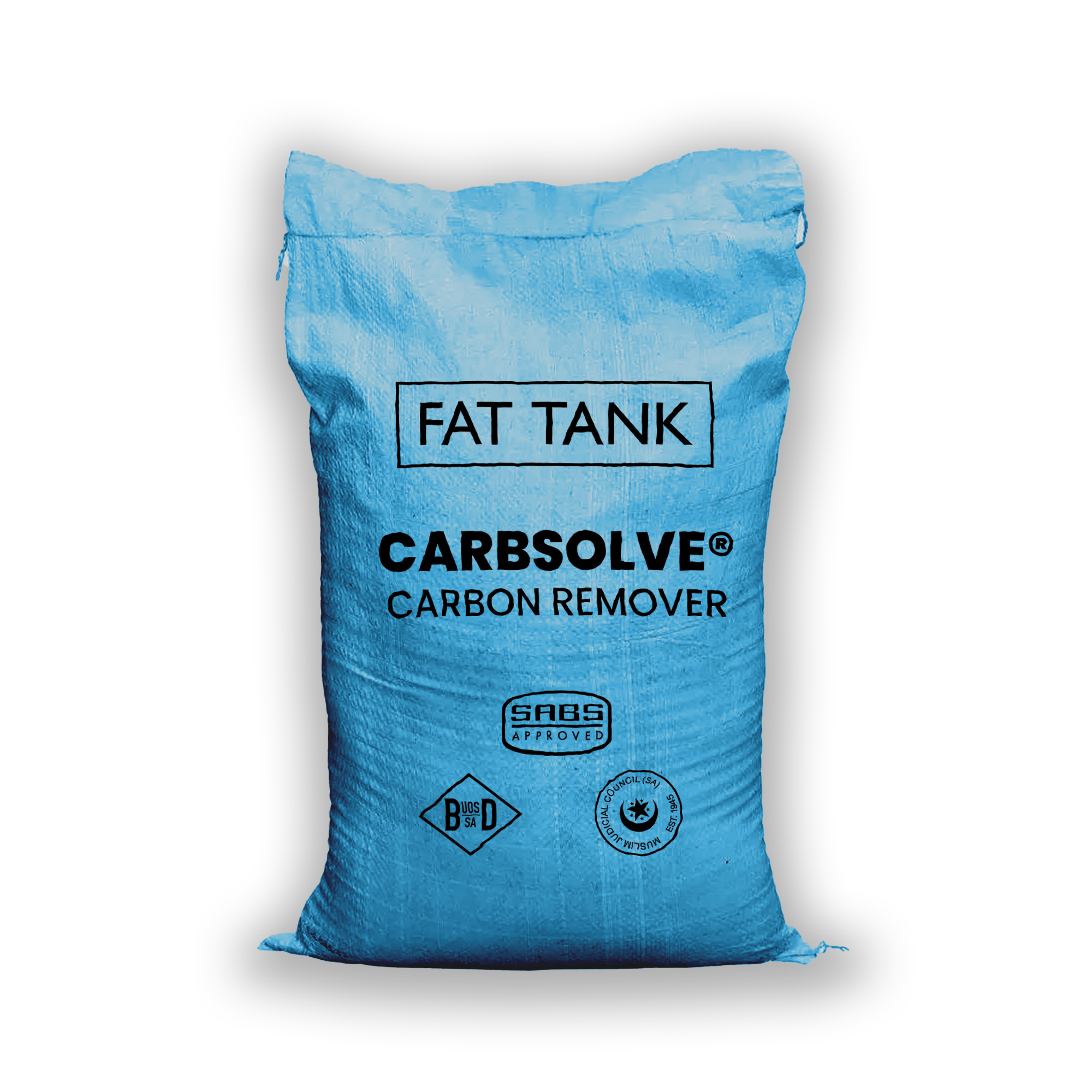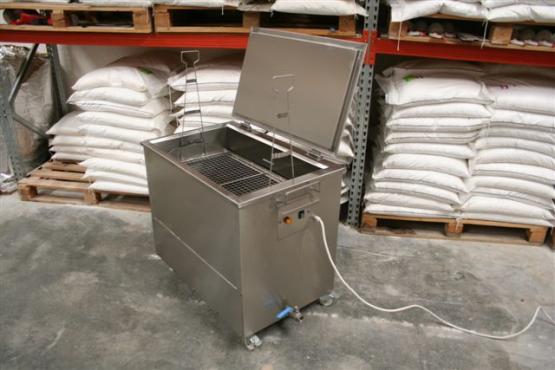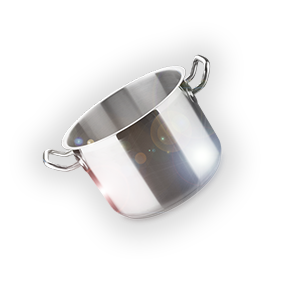CARBSOLVE®
CARBSOLVE®
We have the solution!
In a world cluttered with labour-intensive and hazardous chemicals, we introduce a beacon of change – Tiger Carbon Removal Powder, also known as CARBSOLVE®. Unlike its corrosive counterparts, CARBSOLVE® is a testament to the power of green technology. Our solution is an embodiment of eco-friendliness, non-toxicity, non-corrosiveness, and complete biodegradability.
CARBSOLVE® is more than a solution; it’s an assurance to preserve. Crafted to safeguard both metal and plastic, your kitchen equipment stays as-new, resilient, and damage-free, standing strong against those who work tirelessly to clean it.

Advantages of Using the Fat Tank System with CARBSOLVE®
NON-TOXIC
NON-CORROSIVE
CARBSOLVE® represents a non-toxic, environmentally conscious, user-friendly, and biodegradable cleaning powder. It's specifically designed for application within a Fat Tank Decarbonising Soak Tank. The collaborative power of Fat Tank and CARBSOLVE® ensures the effective removal of fat, grease, carbon, and oil, while keeping the original equipment undamaged.
MAXIMISE LABOUR EFFICIENCY. REDUCE DIRECT COSTS
By reducing the need for extensive manual scrubbing of equipment, there will be a decrease in time and labour demands. This, in turn, will boost staff morale and lead to improved overall performance.
GREEN FOR THE PLANET
Fat Tank offers four standard sizes, catering to various needs. When a single application is placed in the tank and heated to operational temperature, it consistently cleans and eliminates fat, grease, carbon, and oil build-up for 28 days.
COST-EFFECTIVE
365 DAYS OF SAVINGS
CARBSOLVE® is more than a solution; it’s an assurance to preserve, keeping kitchen equipment as-new, resilient and damage-free.



INDUSTRIES THAT CAN BENEFIT FROM CARBSOLVE®
Hospitality
Hotels & Resorts
Restaurants & Cafes
Catering & Central Kitchens
Hospitals
Bakeries
Canteens
Fast Food Outlets
CARBSOLVE®
PLUS
SOAK TANK
EQUALS
RESULTS
CARBON
AND WHY IT'S A PROBLEM
What is carbon?
The build-up of fats and oils on cooking and baking equipment soon turns into a carbon like crust, almost impossible to clean except with harsh, toxic chemicals
Restaurant kitchens often use a combination of methods to effectively remove carbon buildup from pots and kitchen equipment. Here’s a typical process:
1. Soaking: Pots are often soaked in a solution of hot water and a degreasing agent. This helps to soften the carbon and make it easier to scrub off.
2. Scrubbing: Using abrasive scrubbers, brushes, or scouring pads, kitchen staff manually scrub the pots to remove the loosened carbon deposits.
3. Boiling: Some kitchens might boil pots in a solution of water and a cleaning agent to help break down the carbon buildup.
4. Degreasers and Cleaning Agents: Commercial degreasers or specialized cleaning agents designed for removing carbon buildup are applied. These products are chosen for their effectiveness and safety.
5. Steam Cleaning: In some cases, steam cleaning machines are used to apply high-pressure hot steam, which can help dissolve and remove carbon deposits.
6. Mechanical Methods: For heavy buildup, mechanical methods like using wire brushes, scrapers, or even sanding may be employed.
7. Oven Cleaning: Some pots may be placed in an oven on a self-cleaning cycle to burn off the carbon deposits, followed by manual cleaning.
8. Ultrasonic Cleaning: In advanced kitchens, ultrasonic cleaning machines may be used. These machines use high-frequency sound waves to agitate a cleaning solution, effectively removing stubborn deposits.
It’s important to note that while these methods are effective, they should be done with care to avoid damaging the pots. Additionally, when using any chemicals or cleaning agents, following safety guidelines, and using appropriate protective equipment is crucial.
All the above methods can workCARBSOLVE® with a decarbonising soak tank outshines them all!
CONVINCING ARGUMENTS
Here are convincing arguments for using the Fat Tank system:
1. Efficiency: Fat Tank offers a highly efficient solution for removing tough carbon buildup from kitchenware. This means less time and effort spent on cleaning.
2. Eco-Friendly and Non-Toxic: The product’s organic and non-toxic formula not only ensures a safe working environment but also aligns with sustainability goals, which is increasingly important in today’s market.
3. Cost-Effective: Investing in the Fat Tank system can lead to long-term cost savings. It reduces the need for expensive and potentially harmful chemical cleaners, as well as labour costs associated with extensive scrubbing.
4. Improved Hygiene and Safety: By effectively removing carbon buildup, you’re ensuring a higher level of cleanliness in your kitchen, which is essential for maintaining food safety standards and preventing contamination.
5. Extended Equipment Lifespan: Regular cleaning with Fat Tank can help extend the lifespan of your kitchen equipment, saving you money on replacement costs in the long run.
6. Compliance with Health Regulations: Using an effective cleaning solution like the Fat Tank system helps ensure that your kitchen meets and exceeds health and safety standards, reducing the risk of potential fines or closures due to violations.
7. Enhanced Food Quality: A clean kitchen not only promotes safety but also contributes to better-tasting food, as there’s no residue or off-Flavors from carbon buildup.
8. Professional Image: A clean and well-maintained kitchen speaks volumes about your business. It instils confidence in customers and can positively impact your reputation.
9. Ease of Use: Fat Tank’s solution simplifies the cleaning process, making it a user-friendly option for your kitchen staff.
10. Dedicated Support and Training: With Fat Tank International, you’ll have access to experienced teams who can provide personalized support and training, ensuring you get the most out of the product.
These arguments collectively highlight the benefits and value that the Fat Tank system brings to commercial kitchens, making it a compelling choice for businesses in the food industry.